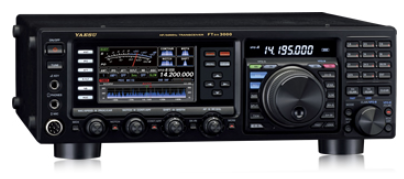For a long while, N1MM seems to have been the standard for contest logging software. I’m not absolutely sure, but I think it may have been what the Twin Cities Repeater Club used for Field Day way back in the ’90s when I would participate at their Field Day event, the last full weekend (of rain) in June.
Last summer, I visited the Field Day operation of the Anoka County Amateur Radio Club, not because I’m a member, but because the park where they do Field Day is about a mile from my house.
Anyway – I have done ham radio contesting before. Not a lot. And I’ve sat in the 2nd chair at a CW station, wherein the primary CW operator calls out or writes down the callsign and exchange, and the other guy types into the logging software. Usually, this is a one-man thing, but at the TCRC Field Day, they had at least one older gentleman with a great ear and fist, but who did NOT like dealing with the computer.
It is also my recollection that sometimes someone at one of the computers would click the wrong thing, or something would go amiss, and “the expert” on the logging software would be called over to get things back to where they needed to be. While I don’t want to be that guy, I figured it’d be in my best interest to learn how N1MM is set up and run for a contest. Maybe for me, for operating Field Day solo at home. Maybe in case I’m operating at a club’s Field Day.
Florida QSO Party
It was mere coincidence, but then, there’s some contest running somewhere almost every weekend anyway. I spent hours getting N1MM and my FTDX3000…

…working with each other. And once all the menu items (both software and hardware) are properly aligned, and the cables go where they need to go, they work together very well indeed. Then I was all, “Now what?” So I looked to see if there was a contest going on or coming up for which I could practice the set-up-a-new-contest-log-in-this-database thing. Sure enough, at that moment the Florida QSO Party was a mere few hours into it. Funnily enough, that contest started probably right around the same time I began installing N1MM.
The setting up of a new contest log was among the easier things I’d done in N1MM. It was becoming clear why it’s so popular.
I Can’t Copy That Fast Yet
Many of these serious contesters do fast CW. Really fast. I’m working on learning Morse Code, and building up speed, but I’m a long way from being able to hear the other guy’s callsign at 30wpm and having any clue beyond the first letter. But N1MM cleverly works together with fldigi, which I’ve been using for quite a while to decode a variety of digital modes, and CW.
Here’s the thing: I can send my own callsign easily at 25wpm. And I can recognize my own callsign at 30wpm. And as it happens (and this is the part I had not expected)… you can operate in a contest in search-and-pounce mode without ever needing to send the other guy’s callsign. Here’s how it worked…
I’d listen to a guy calling CQ (he’s in “run mode”). He’ll send something like this…
CQ FQP W4ABC W4ABC
…and then he will pause, listening for responses. The other stations respond by merely sending their own callsign, like “N9XYZ”.
Then the guy running will send “N9XYZ W4ABC 5NN SEM”. That’s CW shorthand for 599 Seminole County, which is to say “You are easily readable on a 1-to-5 scale, your signal strength is full-quieting S9 units on the meter, and the quality of your tone is excellent on a 1-to-9 scale, as received here in Seminole County, FL.” That might all be a lie. He may have had some difficulty copying, the signal may not have moved his meter at all above the noise, and the tone might be rough or chirpy. Doesn’t matter. In a contest, all reports are 599. And since “N” is merely dah-dit while 9 is dah-dah-dah-dah-dit, they also abbreviate the “9” with “N”.
The guy who just got a report from the CQ-er replies something like “RRR TU 5NN IL IL”. That’s “Roger, thank you, you’re also 599 in Illinois.”
It closes off with the CQ-er with something like “TU W4ABC QRZ”.
Notice: the guy in Illinois never sent the W4 callsign, only his own, and a few other characters he could memorize, or send from software.
This is when it dawned on me… all I have to do is listen long enough to clearly decode the CQ-er sending his own callsign and 3-letter county abbreviation. Copy-n-paste (or just retype) those two bits into N1MM and now the whole conversation can be done with Function-key presses. I was nervous at first, but it actually went pretty easily. I made 7 CW contacts over the next hour.
Came back after a break, and band conditions had worsened. The only stations I could hear were ones I’d already worked, or were too fast or too weak for fldigi to decode. Meh, so be it.
I think I’ll do a few more of these contests, such that I can be ready to take a shot at maybe doing some CW during Field Day this coming June.

